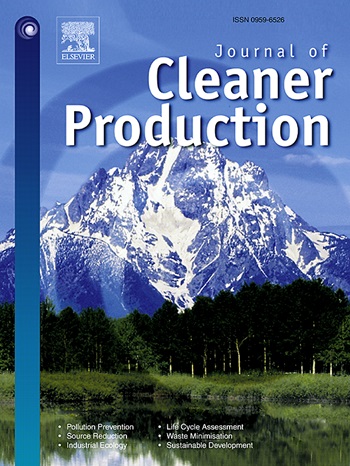Integrating organic amendments and enhanced efficiency fertilizers for sustainable rice production——A case study in a tropic paddy system
IF 9.7
1区 环境科学与生态学
Q1 ENGINEERING, ENVIRONMENTAL
引用次数: 0
Abstract
Rice production is critical for food security, yet China's paddy fields face declining soil quality and grain quality despite increased yields. Organic amendments and enhanced efficiency fertilizers (EEFs) can improve soil organic matter (SOM) and nutrient use efficiency, but their optimal combination for rice production is unclear. Through three seasons field experiments, this study explores the effects of integrating organic amendments, EEFs, and 4R nitrogen (N) management stewardship (Right rate, time, source, and place) on enhancing rice grain attributes, N use efficiency (NUE) and soil quality in tropical paddy system. It compared one conventional practice with seven ‘4Rplus’ treatments (4 R concept combined with EEFs and organic amendments), reducing N application from 180 kg N ha−1 (conventional) to 140 kg N ha−1. Results showed that 20 % and 40 % organic N substitution increased rice yield by 4 % and 5 %, respectively, under reduced N application, while a 60 % substitution decreased yield by 3 %. As the proportion of organic substitutes increased, the content of mineral nutrients such as magnesium, zinc, and iron increased, and the amino acid structure is improved. The 40 % organic substitution combined with controlled release fertilizer (40MC) treatment achieved the best performance on improving grain quality, with lower amylose content (16.3 %) and crude protein content (65.2 mg g−1), higher head rice rate (64.2 %), and lower chalkiness (1.4 %). Controlled release fertilizer (CRF) was more effective than inhibitor-based EEFs in improving rice yields, quality and NUE. The 40MC treatment reduced N surplus to 60 kg N ha−1 and achieved a NUE of 57 %. Inhibitor-based treatments (urease inhibitor and nitrification inhibitor) averaged an N surplus of 75 kg N ha−1 with NUE of 46 %, with no significant differences in grain quality between inhibitors. Supplementing 40MC with amino acid powder further increased yield by 10 % and NUE to 60 %, while biochar application did not improve rice quality or yield but significantly enhanced soil fertility. These findings highlight that integrating organic amendments with EEFs is a promising strategy for achieving sustainable production in tropical paddy systems, synergistically enhancing rice yield, quality, and soil fertility while improving NUE and minimizing N losses.
结合有机改良剂和高效肥料促进水稻可持续生产——以热带水稻系统为例
水稻生产对粮食安全至关重要,但尽管产量增加,中国的稻田却面临着土壤质量和粮食质量下降的问题。有机改良剂和高效能肥料(EEFs)可以提高土壤有机质(SOM)和养分利用效率,但它们在水稻生产中的最佳组合尚不清楚。通过3个季节的田间试验,探讨了有机改良、EEFs和4R氮素管理管理(正确的速率、时间、来源和地点)相结合对提高热带水稻系统稻米属性、氮素利用效率和土壤质量的影响。该研究将一种常规做法与7种“4Rplus”处理(4R概念结合EEFs和有机改进剂)进行了比较,将施氮量从180 kg N ha-1(常规)减少到140 kg N ha-1。结果表明,减少施氮量下,20%和40%有机氮替代量分别使水稻增产4%和5%,60%有机氮替代量使水稻减产3%。随着有机代用品比例的增加,镁、锌、铁等矿质营养素含量增加,氨基酸结构改善。40%有机替代配控释肥(40MC)处理对籽粒品质的改善效果最好,直链淀粉含量(16.3%)和粗蛋白质含量(65.2 mg g-1)较低,抽穗率(64.2%)较高,垩白度(1.4%)较低。控释肥(CRF)在提高水稻产量、品质和氮肥利用率方面比缓释肥更有效。40MC处理使氮素过剩减少到60 kg N hm -1,氮肥利用效率达到57%。基于抑制剂的处理(脲酶抑制剂和硝化抑制剂)平均氮盈余为75 kg N ha-1,氮素利用效率为46%,各抑制剂之间的籽粒品质无显著差异。在40MC中添加氨基酸粉可使产量提高10%,氮肥利用率提高60%,施用生物炭不能改善稻米品质和产量,但能显著提高土壤肥力。这些发现表明,在热带水稻系统中,有机改良与EEFs相结合是实现可持续生产、协同提高水稻产量、质量和土壤肥力、同时提高氮肥利用效率和减少氮素损失的一种有前景的策略。
本文章由计算机程序翻译,如有差异,请以英文原文为准。
求助全文
约1分钟内获得全文
求助全文
来源期刊

Journal of Cleaner Production
环境科学-工程:环境
CiteScore
20.40
自引率
9.00%
发文量
4720
审稿时长
111 days
期刊介绍:
The Journal of Cleaner Production is an international, transdisciplinary journal that addresses and discusses theoretical and practical Cleaner Production, Environmental, and Sustainability issues. It aims to help societies become more sustainable by focusing on the concept of 'Cleaner Production', which aims at preventing waste production and increasing efficiencies in energy, water, resources, and human capital use. The journal serves as a platform for corporations, governments, education institutions, regions, and societies to engage in discussions and research related to Cleaner Production, environmental, and sustainability practices.
 求助内容:
求助内容: 应助结果提醒方式:
应助结果提醒方式:


